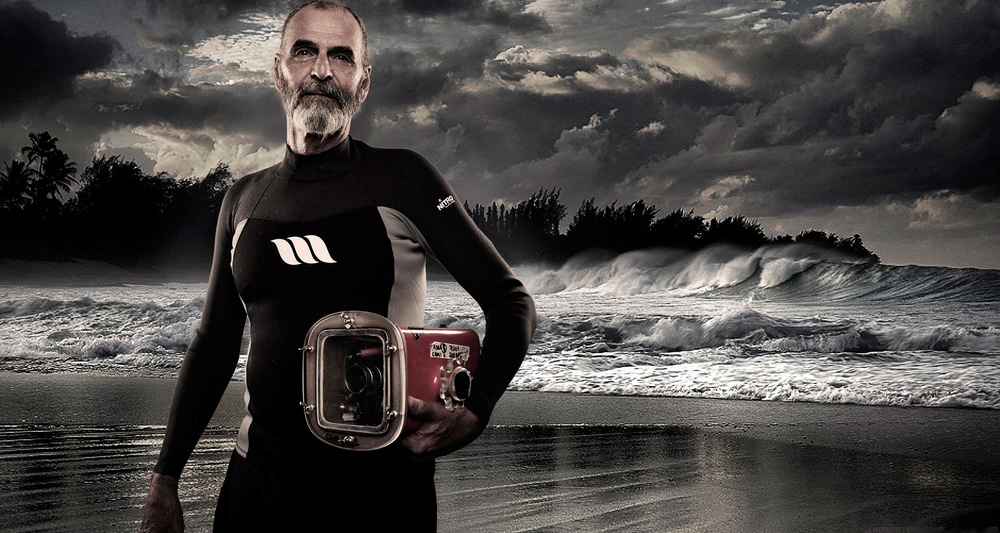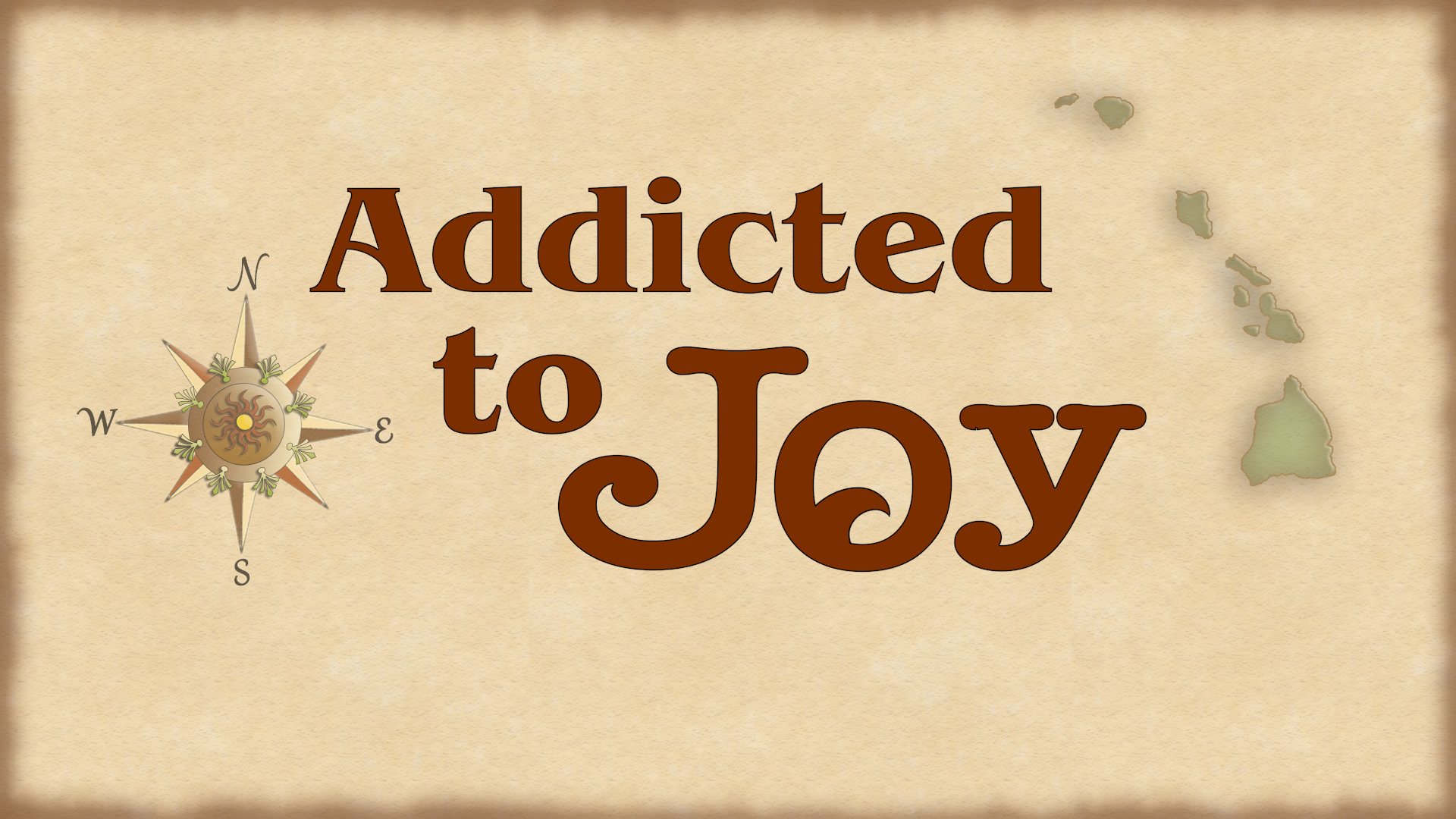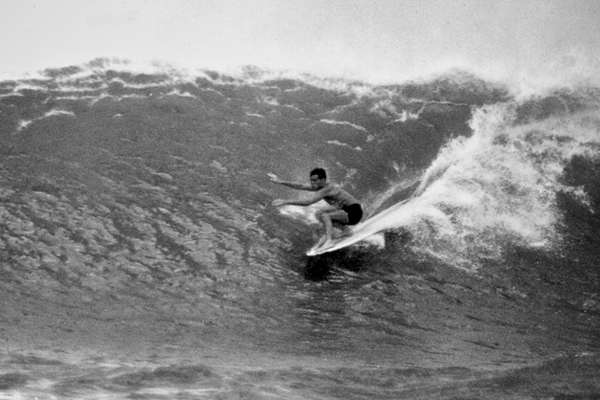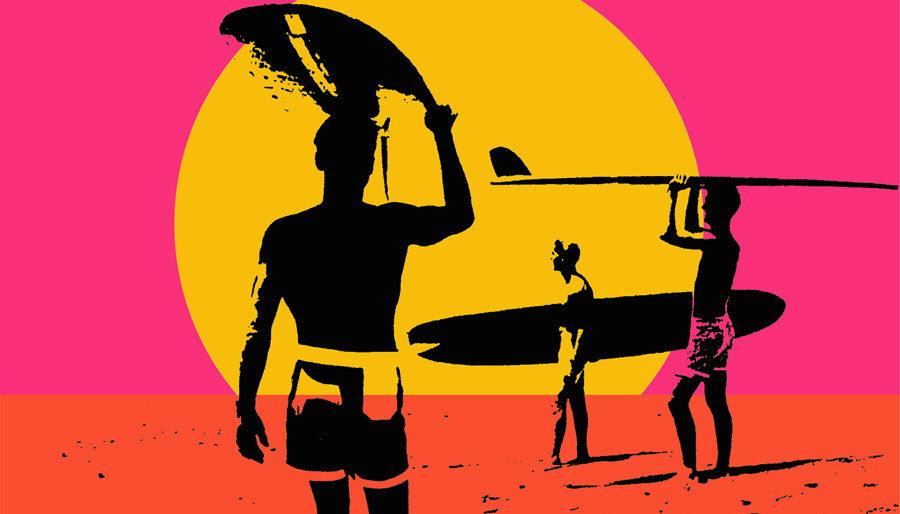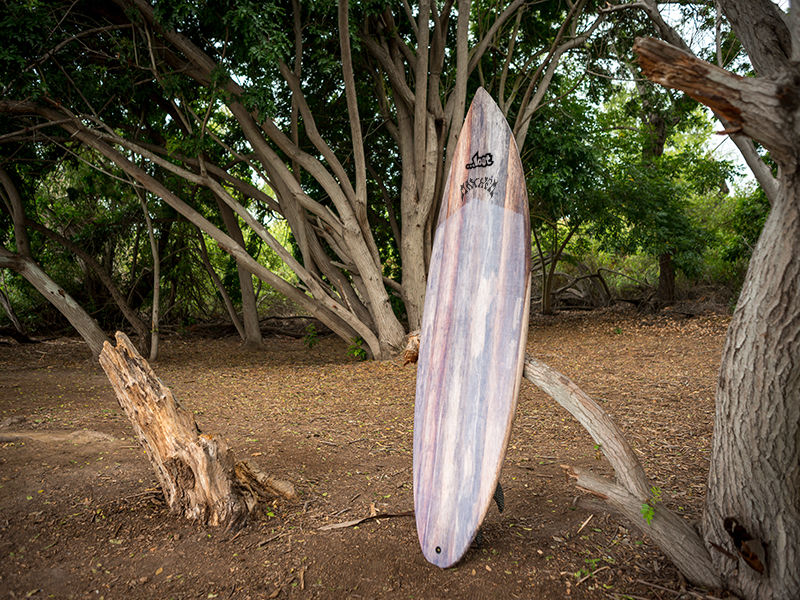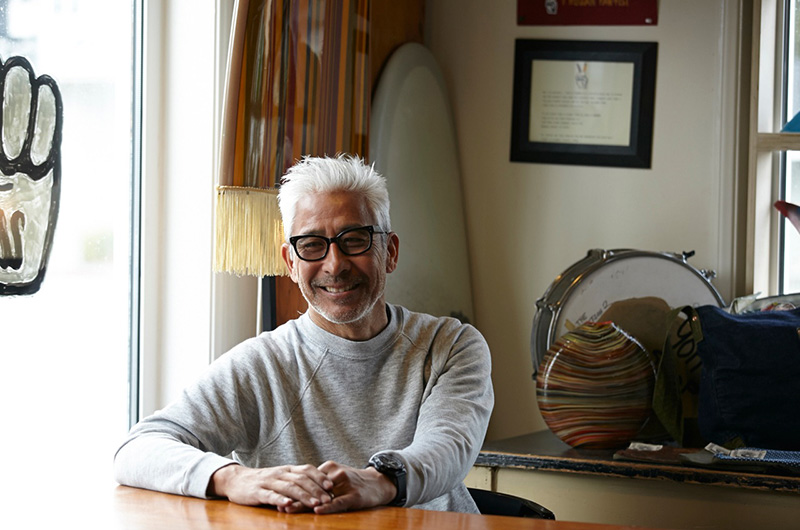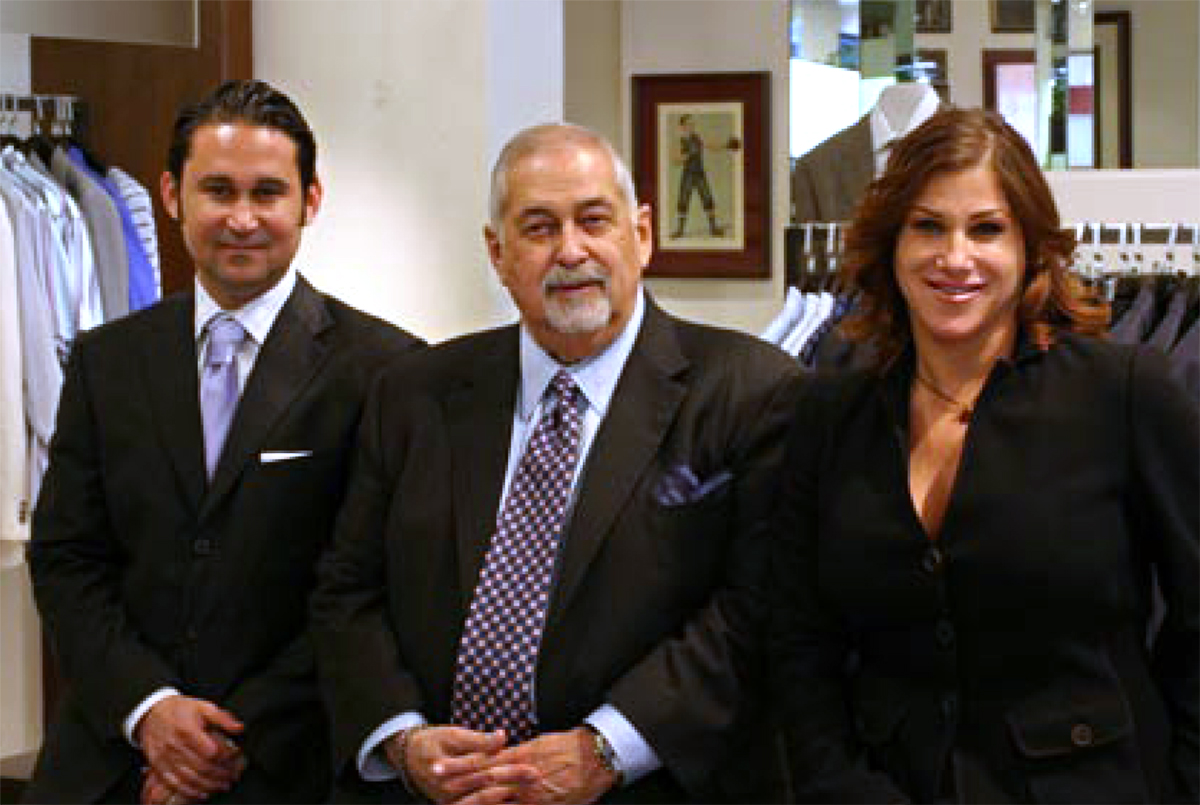OK, you’re probably asking, “Who is Jack McCoy, and why are you writing about him?” Fair enough. I’ll try to condense my answer to a few paragraphs, and that’s not easy for me to do. Let’s just call it a “thumbnail sketch.”
About a year ago, Dr. Jack Harrington, a fraternity brother of mine called to see if I might be interested in becoming a partner for an idea he had. I was very curious, and said, “What is it? Please tell me.”
Jack said, “My concept is to present an awe inspiring video on water screens, a unique and very entertaining medium. Our show will center on the legendary father of surfing, Duke Kahanamoku.
Duke is a true Hawaiian hero that I believe should be honored. Not only for his legendary surfing, swimming and Olympic exploits, but his genuine “good guy” character should be a central theme of the show.
I want to share the grace, beauty, and innocence of turn of the century Hawaii. The final scene might show Duke riding the epic tsunami wave in 1917, outside of Diamond Head that will leave the audience breathless.
The concept is to use the water screen technology that renders a mystical effect to the video. It will be an immersive and visually dynamic show that will surround our audience in a world of water, special effects and exillarating music that will literally wrap the wave around the audience, providing each guest the sensation of riding a 75 foot wave.
He added, “I am working with Scott Ritt, owner of Mirage Water Works, Inc., to provide the ‘wow’ factor for the movie. Scott’s reputation and resume is very impressive.”
Well, I loved his idea and concept and said, “Yes, I would like to work with you on this fascinating project. What an exciting opportunity, and you know how much I love Hawaii.”
Fast forward to April, 2015…
Thanks to an introduction from my friend Paul Strauch, and through the technology of Skype, I meet Jack McCoy
Over the past year, Jack Harrington, Scott and I have met and talked to many people in the surfing and hospitality business about our “vision,” for this visually dynamic movie and have received overwhelming and enthusiastic interest and support.One of our most enthusiastic supporters is Paul Strauch, Executive Director at SHACC (Surfing Heritage and Cultural Museum), legendary big board surfer during the 60s, and one of the four members on Duke Kahanamoku’s Surf Team in 1965. As you may know, I wrote about Paul in my April, 2015 issue of the Aloha Eddy Line.
Earlier this year, Paul shared several fascinating and humorous stories with me about his dear friend, Jack McCoy, who is internationally recognized, and an award winning surf cinematographer, writer, director, and producer.
He was anxious for the two of us to get acquainted, and thought Jack would be interested in our project. He would provide an element of historical authenticity and creativity to our storyline, and might even be interested in filming your movie.
I found out that Jack has produced 25 of the most revered films about the sport of surfing and the surf culture for over 30 years. He grew up in Kailua on the windward side of Oahu, and began surfing when he was about eight years old. Jack often kept his eyes open when a wave would go over him so he could see the ‘tube’ of the wave.
“The what,” some of you are asking? Well, the “tube” is the space inside a breaking wave between the “lip,” (the part of a wave that pitches out from the top) and the “face” of the wave. He saw raw beauty inside those tubes, and he still does.
Paul smiled and said, “The tube of a wave is a big deal to Jack A special place, where he’s spent a lifetime capturing their powerful and captivating beauty, and many of the celebrated and legendary surfers skilled in riding well inside these enormous moving tubes. You might call it an art form, but it sure is breathtaking to watch.
August 14, 2015 – I finally meet Jack McCoy, via Skype and a laptop camera
Jack McCoy, his wife Kelly, and their two little dogs live in Clareville, a suburb of northern Sydney, Australia, and 17 hours ahead of my home in Newport Beach, CA. In addition to the stories that Paul shared with me, I did further research on Jack prior to our call, and evidently he did the same with me. Thank you, Google.
Our first Skype call lasted almost two hours. There he was sitting in front of his monitor with their two little dogs on his lap. He tells me their names, and then talks about his wife Kelly, who is also his producer. Kelly suddenly sticks her head in sight of the camera, smiles and says, “Hi Bill.”
Isn’t it great when you meet someone, (on Skype no less) and your conversation just ebbs and flows from one subject to another. Just like old friends Well, this is exactly what happened with us. I felt like I had known Jack McCoy Jr. for a long time.
His father, Jack McCoy Sr., was a popular host of a live radio and television show broadcast from the main stage at the Ala Moana Center in Honolulu while Jack Jr. was growing up in Hawaii.
Jack said, “I was 8 years old when I started surfing at Waikiki Beach, and that is where my story begins. That is where I developed my inspiration and lifelong love for the ocean.”
He added, “When I was 12, I watched a Bruce Brown surfing movie at my high school auditorium in Kailua and was intrigued with his film, so I began hanging movie handbills on telephone poles for the touring surf filmmakers.
A few years later, I think it was 1965, I was encouraged to get into film making, so I started distributing Jim Freeman and Greg McGillivray surfing films in Hawaii with my school pal, Randy Rarick.
Jack fondly recalls meeting Bud Browne, a pioneer water and underwater photographer, whose work he emulated. Over the years, Jack has just taken his work to another level.
I moved to Australia in 1970, and in 1975 I met Dick Hoole, the Australian photographer. We began shooting 16 millimeter film in Australia, Indonesia, and Hawaii. And in 1976 we premiered Tubular Swells, my first surf movie. I’m told that it’s still considered to be one of Australia’s best surf films.
In 2013, he premiered his 25th film, A Deeper Shade of Blue, for an audience of over 2500 people at the Hilton Hawaiian Village in Honolulu. A film about surfing’s deeper roots – Hawaiian surf culture – the evolution of the surfboard –the biggest names in surfing – a film about feeling good and being alive – and remarkable underwater shots. Bill, “In a little more than 100 years, surfboards have evolved from cutting down a tree and crafting it with crude tools, to the lightweight, magic carpets of today. ”If you are into surfing, Hawaii, or the surf culture, you have to see this film!
Jack sent me an e-mail message after our first Skype call. His message included a colorful photo collection for the Duke’s Day celebrations and the stories he wrote for each of them. I was delighted to see and read all of them.His e-mail began…..”Hi Bill, great to talk to you today, for me, sort of like old friends. ”I echoed those same feelings. How nice is that? It sure is a great way to begin what could be a very special lifetime relationship. Yeah Skype!
We’ve enjoyed a couple more lengthy Skype calls since that first one, and talked about so many things, but before we said goodbye, he asked me to send him our concept and our ‘vision’ for the Duke Show, and I did

